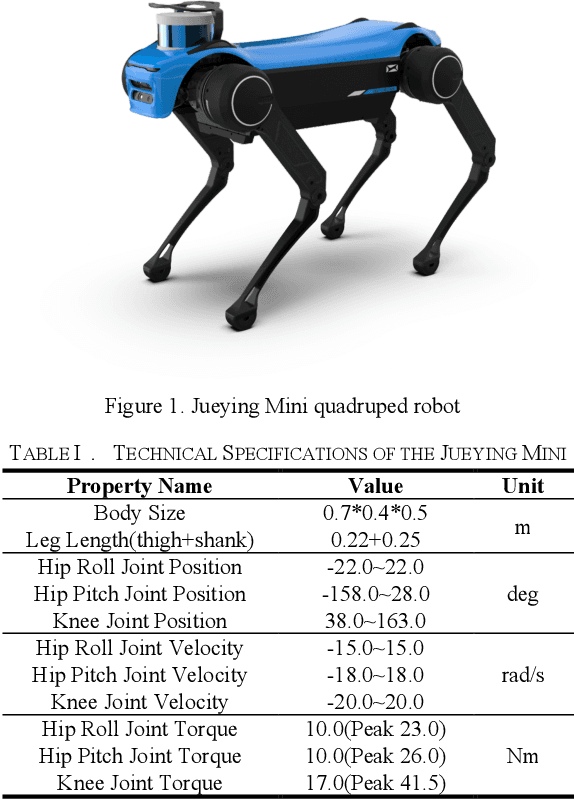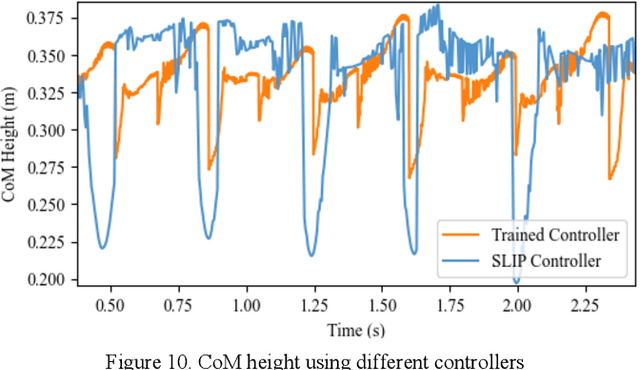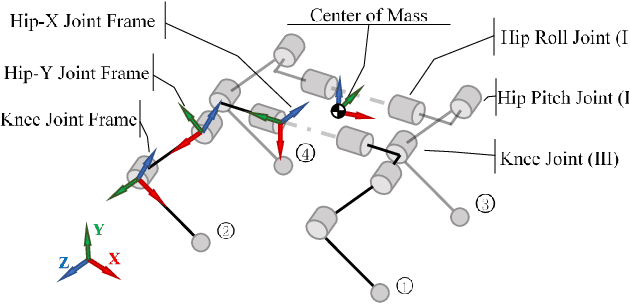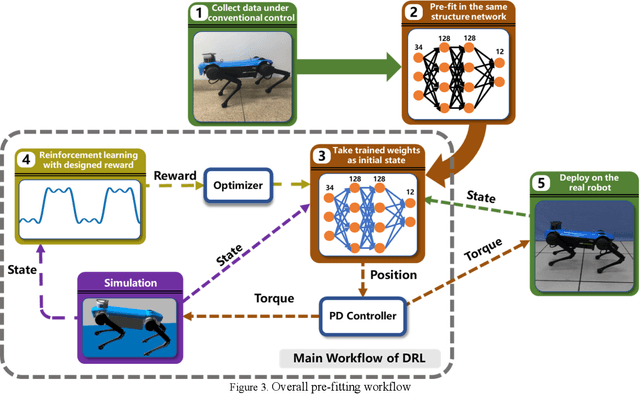Anqiao Li
Seeing Through the Grass: Semantic Pointcloud Filter for Support Surface Learning
May 13, 2023Abstract:Mobile ground robots require perceiving and understanding their surrounding support surface to move around autonomously and safely. The support surface is commonly estimated based on exteroceptive depth measurements, e.g., from LiDARs. However, the measured depth fails to align with the true support surface in the presence of high grass or other penetrable vegetation. In this work, we present the Semantic Pointcloud Filter (SPF), a Convolutional Neural Network (CNN) that learns to adjust LiDAR measurements to align with the underlying support surface. The SPF is trained in a semi-self-supervised manner and takes as an input a LiDAR pointcloud and RGB image. The network predicts a binary segmentation mask that identifies the specific points requiring adjustment, along with estimating their corresponding depth values. To train the segmentation task, 300 distinct images are manually labeled into rigid and non-rigid terrain. The depth estimation task is trained in a self-supervised manner by utilizing the future footholds of the robot to estimate the support surface based on a Gaussian process. Our method can correctly adjust the support surface prior to interacting with the terrain and is extensively tested on the quadruped robot ANYmal. We show the qualitative benefits of SPF in natural environments for elevation mapping and traversability estimation compared to using raw sensor measurements and existing smoothing methods. Quantitative analysis is performed in various natural environments, and an improvement by 48% RMSE is achieved within a meadow terrain.
Bound Controller for a Quadruped Robot using Pre-Fitting Deep Reinforcement Learning
Nov 01, 2020



Abstract:The bound gait is an important gait in quadruped robot locomotion. It can be used to cross obstacles and often serves as transition mode between trot and gallop. However, because of the complexity of the models, the bound gait built by the conventional control method is often unnatural and slow to compute. In the present work, we introduce a method to achieve the bound gait based on model-free pre-fit deep reinforcement learning (PF-DRL). We first constructed a net with the same structure as an actor net in the PPO2 and pre-fit it using the data collected from a robot using conventional model-based controller. Next, the trained weights are transferred into the PPO2 and be optimized further. Moreover, target on the symmetrical and periodic characteristic during bounding, we designed a reward function based on contact points. We also used feature engineering to improve the input features of the DRL model and improve performance on flat ground. Finally, we trained the bound controller in simulation and successfully deployed it on the Jueying Mini robot. It performs better than the conventional method with higher computational efficiency and more stable center-of-mass height in our experiments.
 Add to Chrome
Add to Chrome Add to Firefox
Add to Firefox Add to Edge
Add to Edge